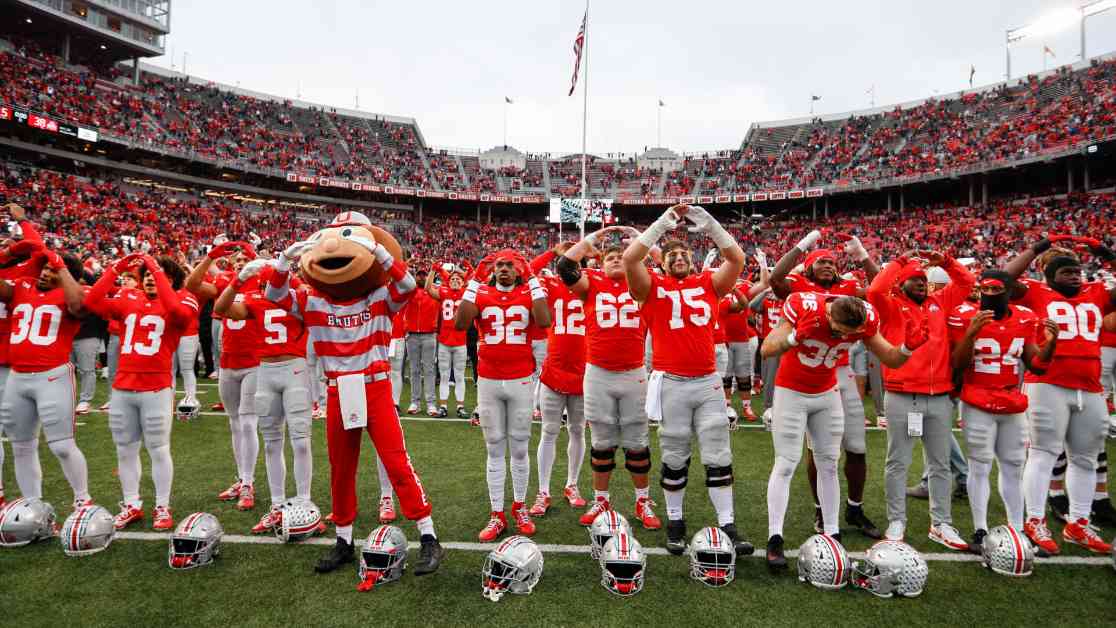Ohio State University has emerged as the most valuable athletic program in college sports, with an estimated worth of $1.32 billion. This revelation comes amidst a surge of interest from private equity investors seeking to capitalize on the lucrative nature of college sports programs that collectively generate billions in revenue annually. The Buckeyes claimed the top spot not only due to their impressive revenue of $280 million in 2023 but also because of their massive alumni base of over 600,000, a fan following exceeding 11 million, significant booster donations of nearly $60 million last year, and a football team that consistently draws crowds of over 100,000 to its games.
The dominance of Ohio State University at the helm of the rankings underscores the growing trend of private investors eyeing opportunities within college sports. CNBC’s analysis, conducted in collaboration with experts in the private equity world, delves into the valuation of the 75 most valuable college athletic programs. These rankings exclude military academies and are confined to schools participating in the NCAA Football Bowl Subdivision, known for attracting top-tier players.
Powerhouses and Media Rights Deals
Unsurprisingly, the upper echelons of the list are largely occupied by schools from the SEC and Big Ten conferences, primarily due to the extensive media rights deals associated with these powerhouses. The SEC boasts a combined value of approximately $13.3 billion, averaging around $832 million per school, closely followed by the Big Ten at roughly $13.2 billion, averaging $734 million per school. The ACC and the Big 12 conferences trail behind with valuations of about $10 billion and $6.7 billion, respectively.
Data Sources and Valuation Methodology
The valuations presented in this comprehensive analysis are a culmination of meticulous research and data collation. Jason Belzer, publisher of AthleticDirectorU and a seasoned advisor to universities on various financial matters, provided valuable insights instrumental to the valuation process. The revenue figures utilized in the assessments were sourced from the Department of Education’s Equity in Athletics Data Analysis and the Knight Commission on Intercollegiate Athletics for the fiscal year 2023.
Insights and Rankings
The rankings take into account a multitude of factors, including conference affiliations, estimated name, image, and likeness (NIL) spend, school subsidies, alumni numbers, and other variables that can influence future revenue growth and profitability. The top 75 college sports programs, as meticulously evaluated by CNBC and industry experts, offer a glimpse into the financial landscape of collegiate athletics, shedding light on the immense value and potential inherent within these institutions.
In light of these revelations, one cannot help but ponder the evolving dynamics of college sports and the implications of heightened investor interest in this domain. As the financial stakes continue to rise, universities face a balancing act between preserving the integrity of amateur athletics and embracing the opportunities presented by strategic investments. The allure of college sports programs extends far beyond the realm of competition, transcending into a realm where financial prowess meets athletic excellence, shaping the future of sports at the collegiate level.



















